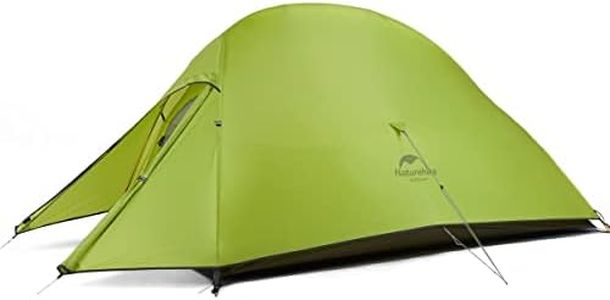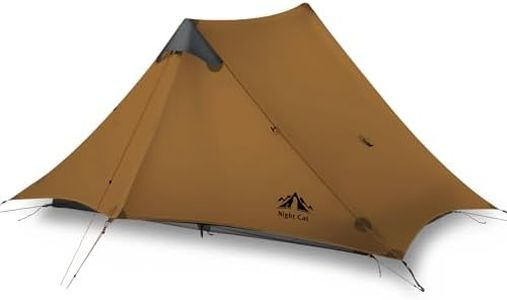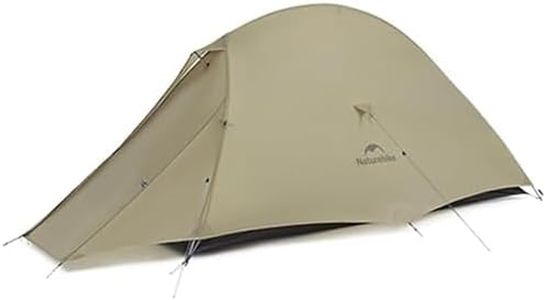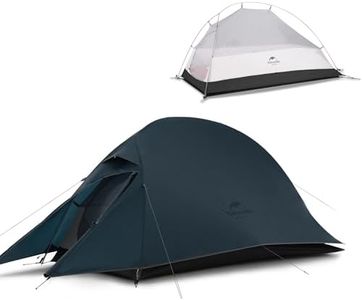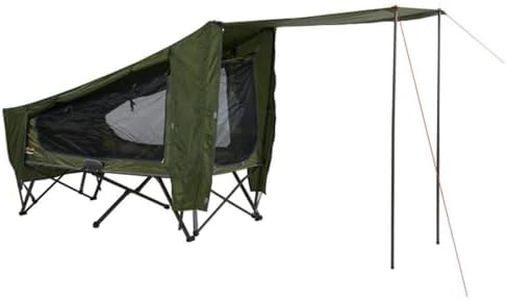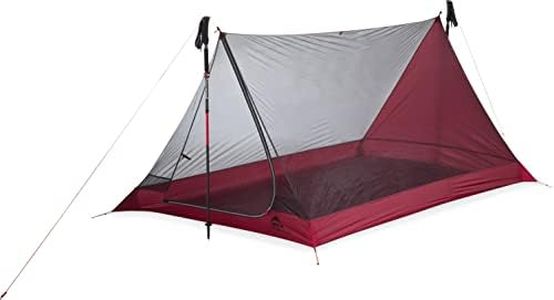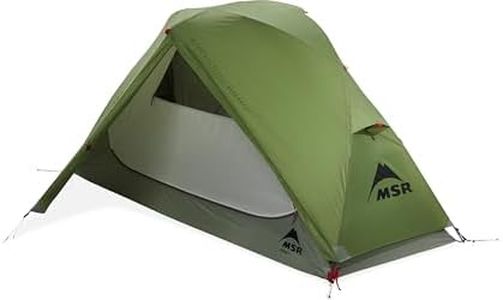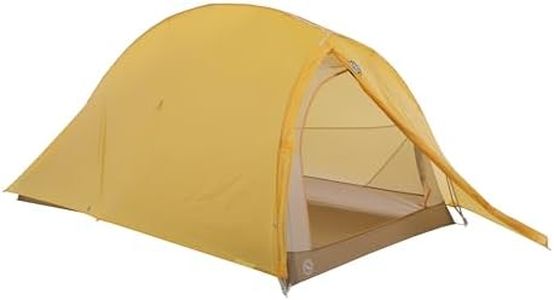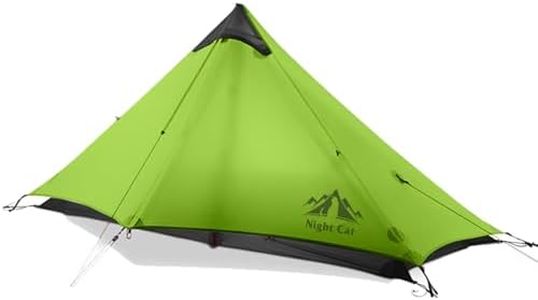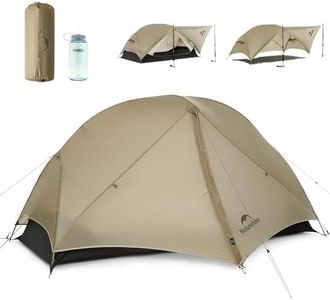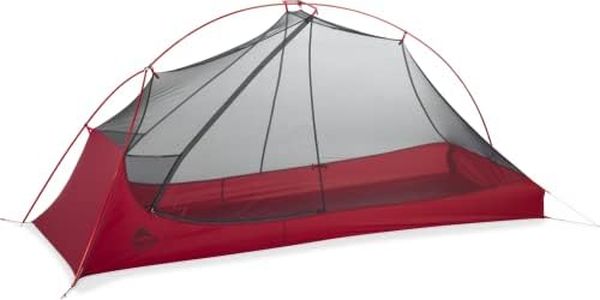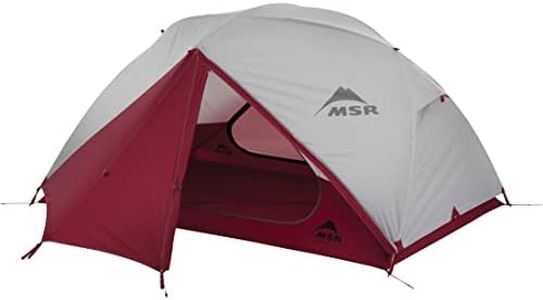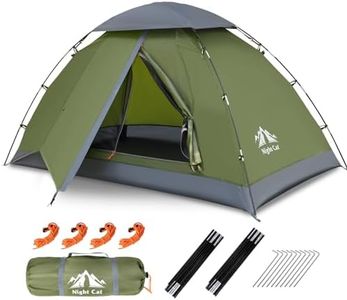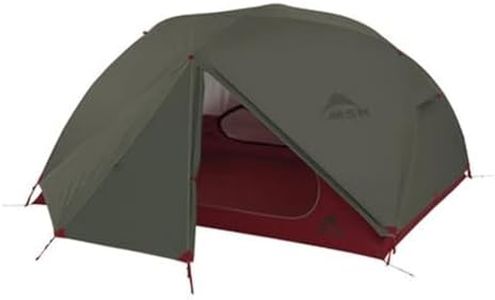We Use CookiesWe use cookies to enhance the security, performance,
functionality and for analytical and promotional activities. By continuing to browse this site you
are agreeing to our privacy policy
10 Best Solo Backpacking Tent
From leading brands and best sellers available on the web.Buying Guide for the Best Solo Backpacking Tent
Choosing a solo backpacking tent is all about balancing weight, durability, weather protection, and space to match your adventures. A solo tent should be lightweight enough to carry easily, while still offering the comfort and shelter you need at the end of a long day. The right choice depends on how you travel, what conditions you expect, and your personal comfort preferences. Consider where you’ll be hiking, the climates you'll face, and how much interior space you want for yourself and your gear.WeightWeight is a crucial spec for backpackers because you carry all your gear yourself, so every ounce matters. Lighter tents generally mean less comfort and fewer features, but are easier to carry over long distances. Heavier tents often have more room or better protection. Tents under 2 pounds are considered ultralight and are best for those who prioritize a minimal pack. Tents between 2 and 3 pounds balance comfort, durability, and weight, suiting most backpackers. Heavier tents over 3 pounds may offer more space or durability but can become burdensome for long treks. Think about how much weight you’re comfortable carrying and how important comfort and features like extra space and storage are to you.
Packed SizePacked size refers to how small the tent is when it’s packed up. This matters for fitting it into your backpack with all your other gear. Smaller packed tents are easier to manage and make packing less of a puzzle. They can range from extremely compact (about the size of a water bottle) to bulkier options. If you have a smaller backpack or like to keep your load streamlined, go for a smaller packed size. If you don’t mind a little more bulk or have room to spare, then focus more on other features.
Season RatingSeason rating tells you what weather conditions the tent is designed for. The most common are 3-season and 4-season tents. 3-season tents are made for spring, summer, and fall, offering ventilation and keeping you dry in rain but aren't built for heavy snow. 4-season tents are designed for winter and harsh weather, providing strength and warmth but weighing more and being less airy. Choose a 3-season tent if you camp mainly in mild to moderate conditions and a 4-season tent only if you expect snow or severe cold.
Interior SpaceInterior space is about how much room you have inside the tent for sleeping and storing your gear. Some solo tents are very minimalist, giving just enough room to sleep, while others provide extra width, height, or even a small vestibule for gear. Consider whether you’re comfortable in tight spaces and whether you need room to keep your pack inside the tent. If you’re taller or like extra space to move, look for tents with a bit more interior room. If shaving weight is more important, a smaller footprint will help.
Weather ProtectionWeather protection covers how well the tent shields you from rain, wind, and even snow. This depends on the tent’s materials, construction, and seam design. Tents with full-coverage rainflies, bathtub-style floors, and reinforced poles offer better protection in storms but can add weight. Lightweight tents may have less coverage or thinner materials. If you plan to camp in areas where weather can change quickly, prioritize strong weather protection even if it adds a little to the weight.
Ease of SetupEase of setup refers to how quickly and simply you can pitch the tent, especially after a long hike or in rough weather. Some designs are freestanding, meaning they stand up on their own and are usually quicker to set up, while non-freestanding tents use trekking poles or require staking, which can be trickier. If you like to move quickly or often set up in bad weather, look for a tent that’s easy and intuitive to pitch.
VentilationVentilation helps prevent condensation inside your tent caused by your breath and body heat, especially in humid or rainy conditions. Good ventilation means mesh panels, windows, or vents that allow airflow while keeping bugs and rain out. If you camp in warm, wet, or humid climates, strong ventilation is important to stay comfortable and dry. In colder areas, a balance is needed between airflow and heat retention.
